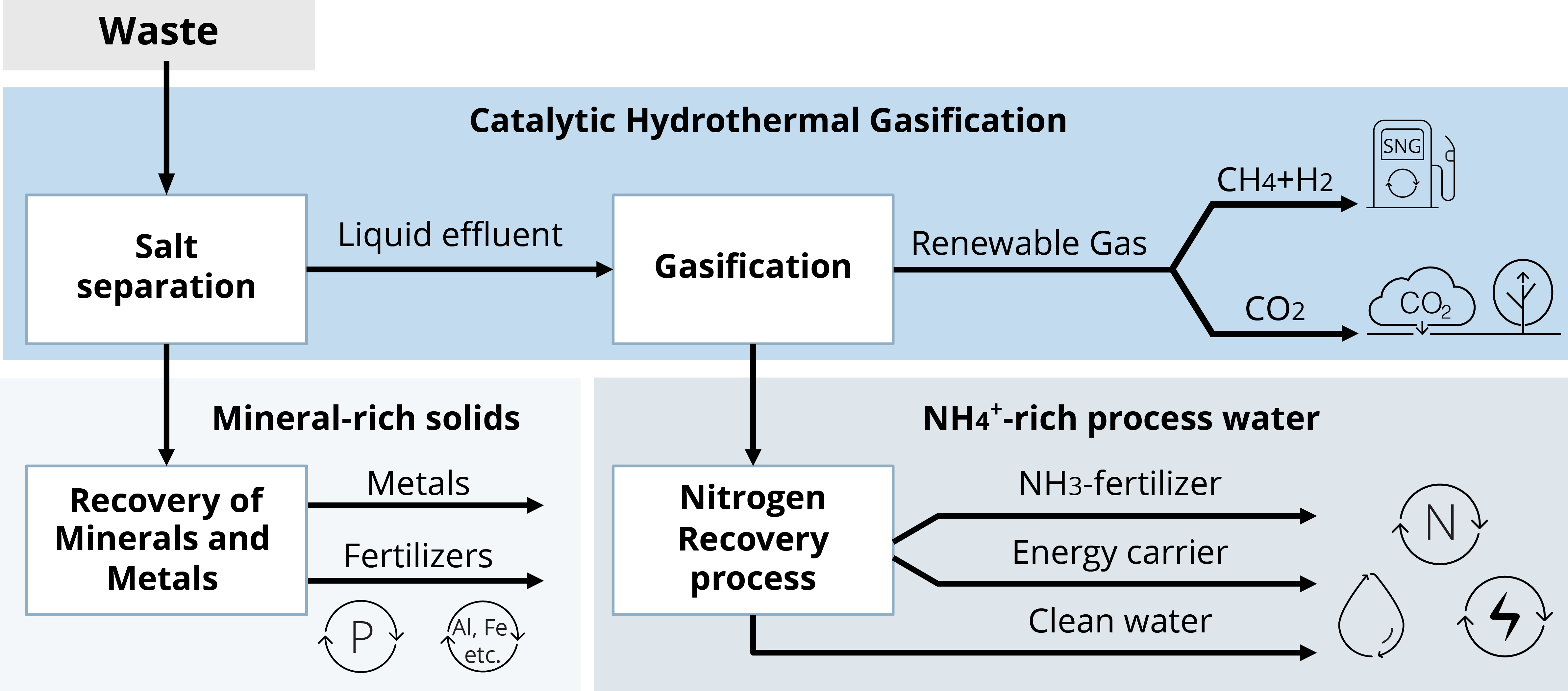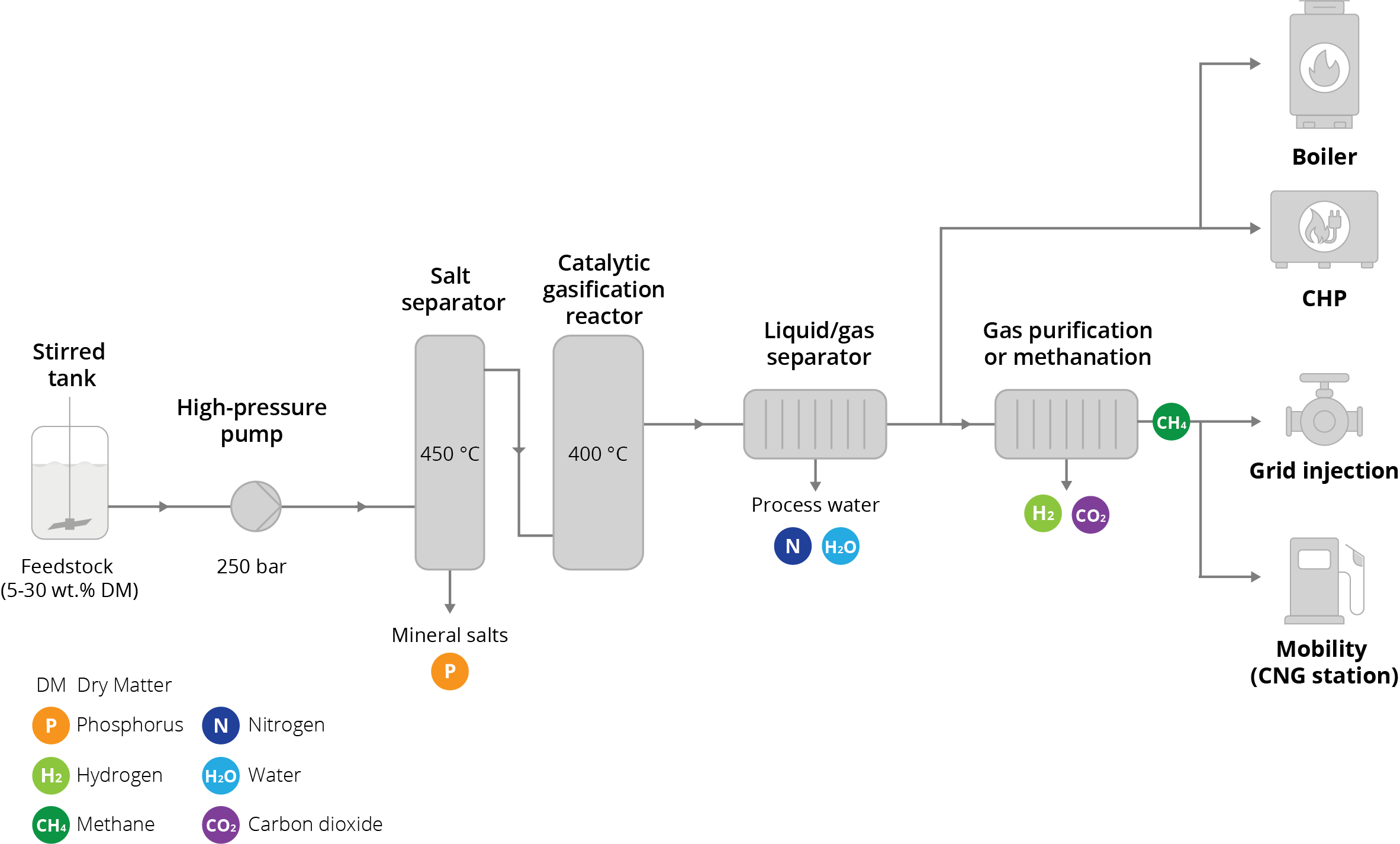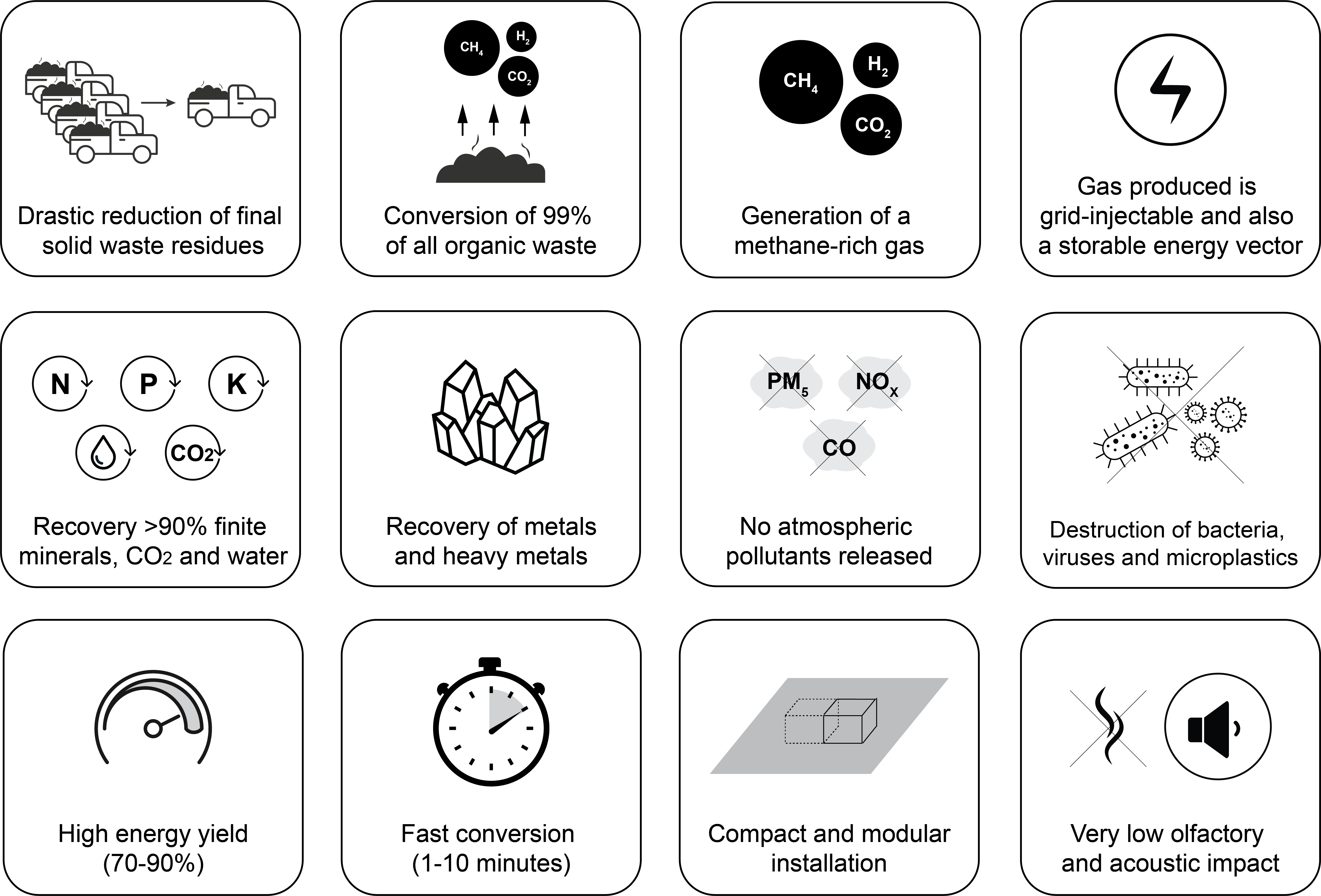- Plastic residues
- Paint residues
- Residue from monomer production
TECHNOLOGY
The waste management challenge
We are facing a global waste management crisis which is intensified by ongoing population growth and economic development. These growth drivers are putting greater pressure on existing waste disposal processes, leading to poor waste management solutions which can cause significant environmental harm.
Currently incineration is championed as the most effective way to eliminate viruses, bacteria and micropollutants (e.g. PFAS) from waste streams. However, this disposal method requires the waste to be transported to treatment facilities before it can be burnt, both of which release a considerable amount of CO2 into the atmosphere. Plus, the energy generated from the heat of the incineration process cannot be stored and this process wastes large volumes of water by using systems that do not recover the steam outputs, further exasperating the scarcity of clean water.
TreaTech's Solution
TreaTech’s technology provides a solution to short- and long-term environmental and climate challenges associated with waste management.
By providing on-site waste treatment solutions we are able to:
- Eliminate toxins and pollutants released into the atmosphere when waste is incinerated.
- Reduce the carbon footprint by removing the need to transport heavy amounts of waste to treatment facilities.
- Remove the risk of soil or water contamination through run off by treating the waste in a contained, circular solution.
When compared with incineration, the most common disposal solution, TreaTech’s technology emits up to 94% less CO2eq and requires three times less space.
Reflecting on the current geopolitical climate, countries globally are striving for energy independence and our technology can be treated as a waste to energy solution. Our circular waste solution captures the maximum value of waste by-products including methane-rich gas, and by storing this gas we can contribute to a local and sustainable supply which could make a significant contribution to a company’s, or even a country’s, energy independence.
If our solution treated the industrial and municipal liquid waste produced each year in the EU, 800 TWh of synthetic methane-rich gas could be generated which is equivalent to 47% of the EU’s annual imports from Russia.1
1Based on 2020 data.
The science behind the catalytic hydrothermal gasification
Our process is based on the catalytic hydrothermal gasification (HTG) which, under supercritical conditions of water (T>374°C, p>221 bar), separates the minerals and organic fractions in the waste and gasifies the remaining organic matter into methane-rich gas. The inorganic fraction, containing valuable minerals such as phosphorous, nitrogen and potassium, can then be extracted and used as fertilisers. Finally, following the waste treatment process, all the water contained in the waste is recovered free of contaminants.
Validated feedstocks
We can treat a wide range of waste streams from various sectors including chemical, food and beverage, municipal, agricultural and livestock waste. So far, we have been able to validate the following feedstocks:
Chemical
Food and Beverages
- Molasses residue
- Banana peel
- Residue from gelatin production
- Coffee grounds
- Industrial biological sludge
Agricultural and Livestock
- Non-digested agricultural waste
- Digestate
- Manure
- Microalgae
Municipal
- Digested sludge
- Non-digested sludge
Transforming waste products into valuable resources
Renewable gas
Our technology removes all hazardous components, such as sulphur, from varying waste streams, resulting in a high quality, renewable gas containing up to 70% methane as the primary product. After an additional purification step, the gas can be injected into the natural gas network or used directly as a source of energy. In addition, H2 can be co-injected into the process to produce a gas containing more than 90% of methane.
Clean water
TreaTech’s pressurised process removes viruses, bacteria, as well as micropollutants such as PFAS from the water it treats. This gives us the ability to recover 90% of the natural steam water compared with traditional wastewater treatment, including incineration, which does not recover any wastewater.
Valuable minerals
TreaTech’s technology also recovers valuable minerals such as phosphates and ammonia that are present in liquid waste. These can be used in fertilisers, contributing to the circular economy and resulting in significant reductions to global emissions as these minerals no longer have to be mined.


